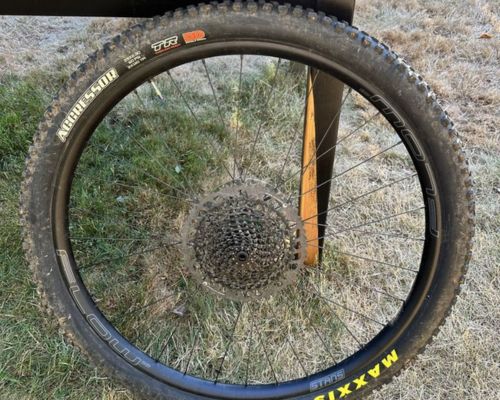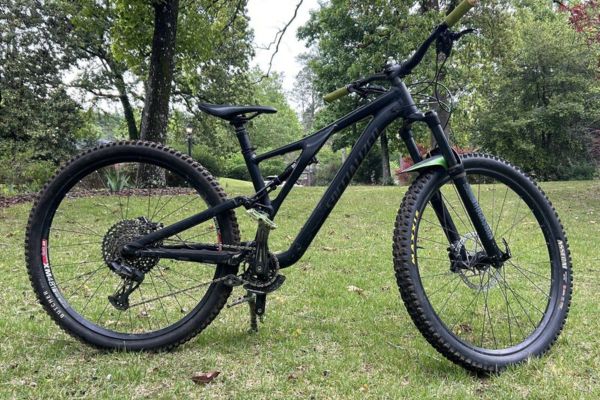Here’s Why Inner Tube Width Matter? (A Complete Guide)
Bike inner tubes are one of the most crucial parts of mountain biking. The inner tubes are usually overlooked because new bikes already have the right ones.
However, when it comes time to replace worn-out inner tubes, this is where things get tricky.
As inner tube width matters, choosing the right size becomes very important.
Opting for the wrong size can lead to undesirable consequences, such as tires that feel soft and squishy or even inner tubes that explode unexpectedly. Now, let’s delve into why the size truly matters and explore the process of selecting the perfect inner tube for your bike.
Why Does Inner Tube Width Matter?
An inner tube is vital in exerting pressure on the sides of a bike tire, creating a firm yet cushioned surface for a comfortable ride.
The key is finding the right balance. When you’re out riding, you want the tire walls to be pushed outwards by precisely the correct amount. Too little pressure or too much can lead to many problems, which we’ll explore just ahead.
Can I Use Smaller or Bigger Inner Tubes than Tire?
When inflating the tube to its maximum recommended Inflation, without exceeding it, a gap emerges between the tube’s outer edge and the tire’s inner edge. This causes the tire to feel loose and can harm the tire walls, including cracks, as the rubber bends and protrudes while cycling. Tires can be pretty expensive, so this outcome should be avoided.
One could solve the gap by overinflating the tube. Mate! This will cause the inner tube rubber to progressively thin. Consequently, it becomes more susceptible to punctures from sharp objects. If you continue inflating the tube, it will eventually burst.
And when it comes to bigger inner tubes, If you use a tube that is too big for your tire, you won’t be able to inflate it to its fullest. It will make your tires feel soft and squishy, especially when you ride your bike.
Large inner tubes also increase the risk of punctures, blowouts, and difficulty handling the bicycle or vehicle.
Using a Wider Inner Tube vs. Narrower Inner Tube
Whether opting for a narrower or wider inner tube, the process remains simple. Utilizing an undersized inner tube entails a seamless fit within the tire, while accommodating a wider tube may require care regarding the pressure.
When using a wider tube, it is important to ensure that it does not fold or bunch up upon itself. Such an occurrence could generate internal friction, leading to a detrimental failure and flat tire.
Advantages of Thicker Inner Tubes
When considering thicker inner tubes, there are several conditions they are very useful for. Firstly, thorny trails pose a significant risk to standard tubes, making thicker ones a more suitable choice. Similarly, thicker inner tubes offer better puncture protection on gravel or sharp rock trails.
In areas such as old warehouses where broken glass may be present, the added thickness of the inner tubes provides an extra layer of defense.
Likewise, in building or construction areas where nails or other sharp objects might be scattered, thicker tubes can help reduce the chances of damage. While there may be various other scenarios that demand thicker inner tubes, the underlying principle remains the same thicker tubes offer enhanced durability compared to their thinner counterparts made of the same material.
Disadvantages of Thicker Inner Tubes
Thicker inner tubes have several disadvantages compared to thinner ones. Firstly, their added weight can negatively affect bike performance, causing slower acceleration and increased rolling resistance, requiring more effort to maintain speed.
Secondly, their reduced flexibility hampers bike handling and responsiveness, making it feel less agile, especially when navigating corners or obstacles. Moreover, thicker tubes exhibit higher rolling resistance, decreasing efficiency, and increased fatigue during long rides.
Their limited compatibility with narrow tires and rims can also lead to fitment issues, installation difficulties, and a higher risk of tube failure. Lastly, thicker tubes provide less cushioning and impact absorption, resulting in a harsher ride on rough terrain or bumpy surfaces.
Advantages of Narrower Inner Tubes
Narrower tubes weigh less, so your tire will be lighter and have more space. By pumping the tubes to full pressure, the tires become stiffer and ride more comfortably.
Another thing about narrower inner tubes is that they reduce rolling resistance, which opposes bicycle forward motion. It is particularly useful in road biking and other activities where speed is key.
Along with reducing weight and rolling resistance, these tubes are generally less expensive than wider ones. Cycling enthusiasts on a budget or who need to replace inner tubes frequently might find this cost advantage appealing.
Disadvantages of Narrower Inner Tubes
Narrower tubes are more prone to pinch flats and punctures, which can lead to frequent flat tires and repair expenses. They may also offer reduced stability, traction, and cushioning compared to wider tubes, impacting control and comfort, particularly on challenging terrain.
Additionally, narrower tubes may be incompatible with certain tire sizes, necessitating specific widths for proper fit.
Ultimately, the inner tube width choice depends on riding style, terrain, and personal preferences.
Final Thoughts
If you’re looking for the right size, ensure it fits exactly and isn’t a little smaller or less here or there.
Also, now that you have all the information regarding the wider or narrower tubes we mentioned above, you are ready to take on the trail with the perfect choice.




![Are Presta Valve Cores Universal? [Only Facts]](https://www.peoplesbicycle.com/wp-content/uploads/2023/10/Are-Presta-Valve-Cores-Universal.png)



One Comment